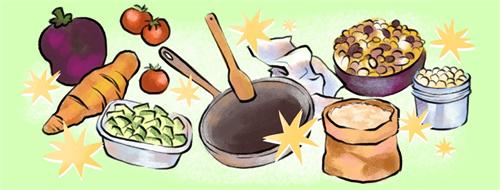Minimalist Parenting: 10 Toys Your Child Actually Needs

During a child’s growth, toys are more than just a form of entertainment—they are vital tools that help children understand the world, develop skills, and express emotions. The essence of minimalist parenting is not about depriving children of joy, but rather about helping them rediscover the true value of toys: fewer, more meaningful, and well-chosen.
So, what toys does a child really need? The answer is not "the more, the better," but rather "the more purposeful, the better." "Purposeful" does not mean expensive or multifunctional—it means supporting a child’s development in emotional, intellectual, social, and psychological ways.
1. Building Blocks (e.g., wooden blocks or LEGO)
Building blocks are one of the most classic open-ended toys. They have no fixed rules or solutions, allowing children to combine, build, and rebuild freely—unlocking limitless creativity. As children experiment and adjust during play, they learn through trial and error, which strengthens hand-eye coordination, spatial awareness, and logical thinking. Blocks are also suitable for a wide range of ages, offering years of companionship and play, making them a timeless toy.
2. Art Supplies (crayons, watercolor, non-toxic paints)
Every child is a natural artist. Drawing is an ideal way to express emotions, unleash imagination, and develop fine motor skills. With just a box of crayons and a blank sheet of paper, children can immerse themselves in a world of self-expression. Art not only enhances creativity and aesthetic sense but also provides a calm outlet for emotional release.
3. Puzzles
Puzzles are excellent for developing a variety of skills. As children complete puzzles, they must observe, judge, and coordinate their hands, often trying multiple combinations before finding the right one. Through this process, children gradually improve their hand coordination, develop longer attention spans, learn to persevere through challenges, and build a stronger understanding of how shapes and spaces relate to each other. Puzzle difficulty can be increased over time to provide age-appropriate challenges and learning progression.
4. Dolls or Stuffed Animals
Stuffed animals are soft companions in a child’s emotional world. Though they don’t speak, they listen quietly to children’s stories and offer comfort and a sense of security. In pretend play, stuffed toys often serve as “another self,” helping children practice emotional management, caring behaviors, and nurturing empathy and independence in subtle ways.
5. Role-Play Toys (kitchen sets, doctor kits, toolsets, etc.)
Children are natural imitators. Role-play toys allow them to mimic everyday life, recreate familiar scenes, and build new stories on top of them. By pretending to be parents, doctors, or restaurant owners, children learn to communicate, solve problems, and understand the world around them, all while enhancing their social and language skills.
6. Picture Books + Puppets
Picture books are a child’s first introduction to language and reading habits, while puppets bring stories to life. Parents can use puppets to animate characters with voices and expressions, making reading more vivid. Children can also use puppets to act out stories, which strengthens their storytelling, logical organization, and turn-taking skills. This highly interactive combination fosters both language development and emotional expression.
7. Musical Toys (drums, xylophones, bells)
Musical toys introduce children to rhythm, sound, and emotion. By playing drums, strumming a xylophone, or shaking bells, children develop a sense of timing and auditory sensitivity. Music not only brings joy but also inspires artistic potential and improves focus and coordination—making it a valuable sensory development tool.
8. Outdoor Toys (balls, jump ropes, scooters)
Physical health is the foundation of growth. Outdoor toys help enhance physical strength, bone development, and reflexes. Balls improve coordination and balance; jump ropes boost endurance and rhythm; scooters and bikes promote balance and cardiovascular fitness. Outdoor play also reduces screen time, relieves stress, and supports overall mental and physical well-being.
9. Toy Vehicles (cars, tracks, trains)
Toy cars, train tracks, and other transportation toys combine driving fun with construction play. They help children learn about different vehicles and their functions. When combined with blocks, these toys allow children to create complex cities or story scenes, fostering logical thinking, spatial design, and problem-solving—awakening their mental potential. When combined with blocks, these toys allow children to create complex cities or story scenes, fostering logical thinking, spatial design, and problem-solving—awakening their mental potential.
10. Natural Materials (sticks, stones, shells, etc.)
The most natural “toys” often come directly from nature. Children are instinctively drawn to sticks, stones, and shells. They can use sticks as swords, stones to create patterns, or shells for collage art. These ever-changing and open-ended materials develop hands-on ability, inspire curiosity, and nurture an environmental mindset. They are low-cost, widely available, and perfect for creative freedom.
How to Reduce the Number of Toys While Enhancing Play Quality?
1. Teach the concept of “taking turns” and sharing
Help children understand that toys are meant to be shared, not just owned. Learning to take turns builds patience, respect, and positive social interactions.
2. Practice toy rotation to maintain novelty
Store away some toys temporarily and rotate them periodically. This reduces visual clutter and makes old toys feel new again—curbing the desire for new purchases.
3. Prioritize quality over quantity
A well-designed, safe, and durable toy is worth more than several low-quality ones. High-quality toys are not only safer but also last longer, reducing waste and supporting sustainable parenting.
The core of minimalist parenting isn’t about reducing joy but about deepening focus and meaningful growth. When children are surrounded by fewer but more valuable toys, their imagination, concentration, creativity, and sense of happiness can multiply. Rather than filling rooms with toys, choose a few that truly touch their hearts and spark their minds. These “essential few” open the door to a bigger, more inspiring world.
Recommended for you:







